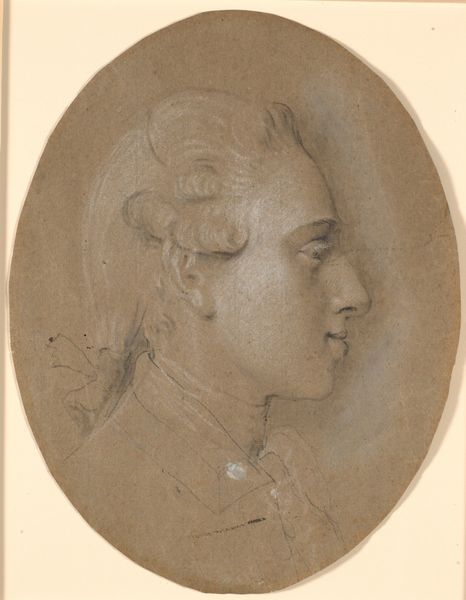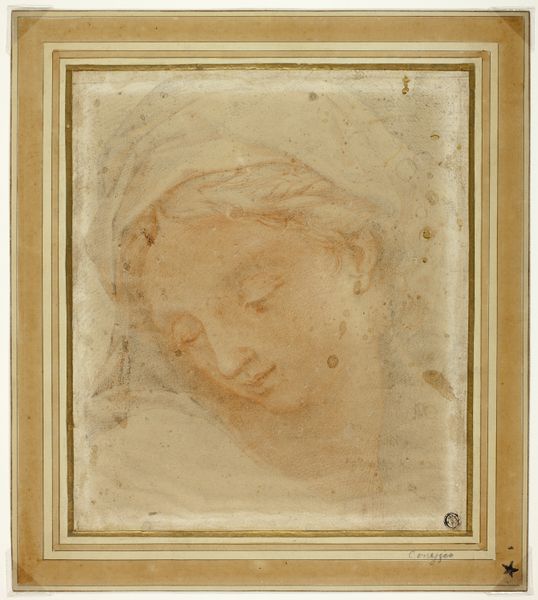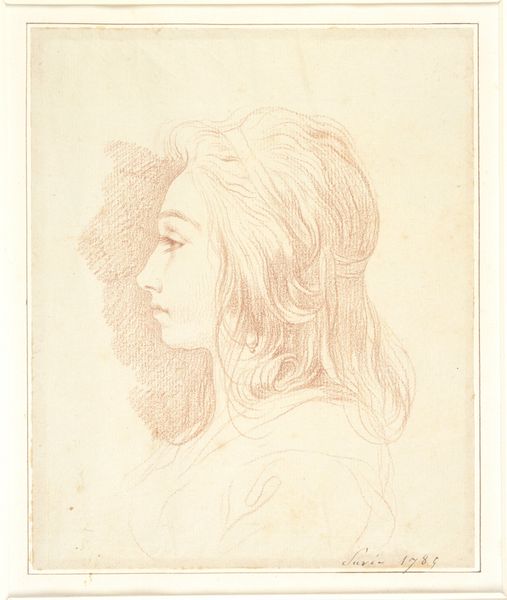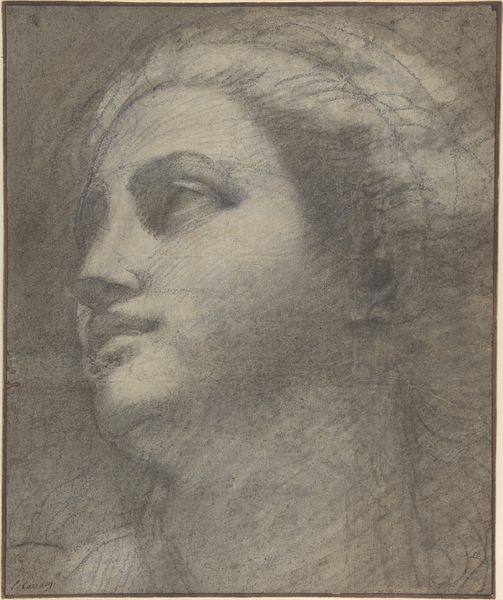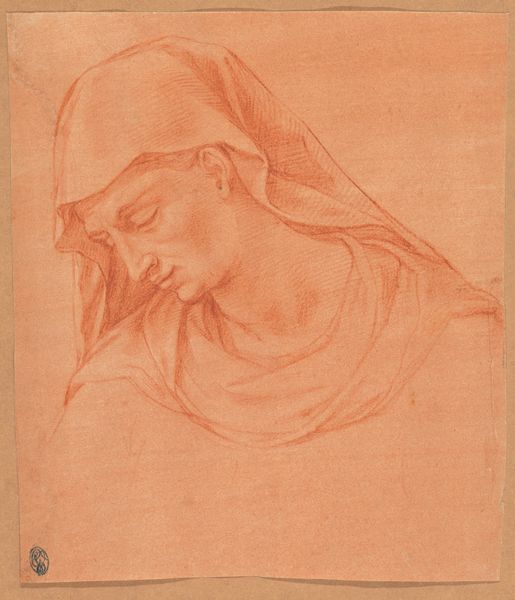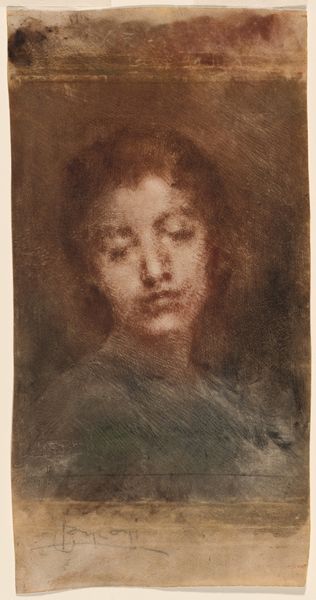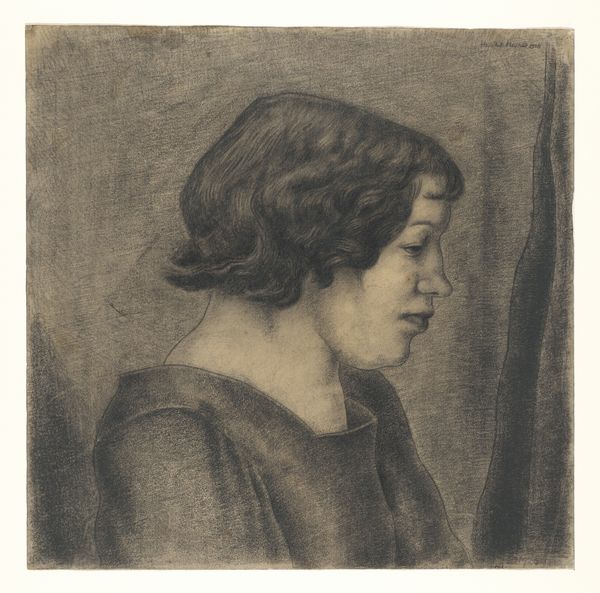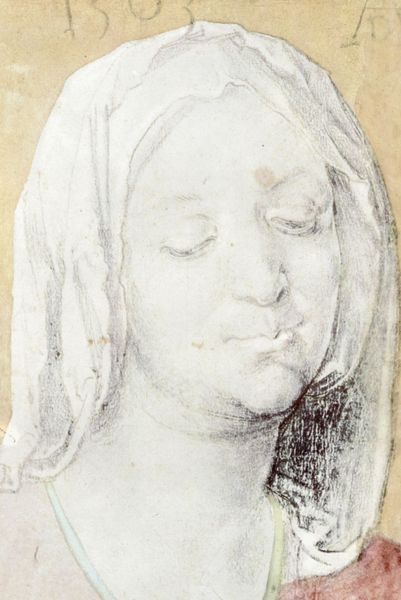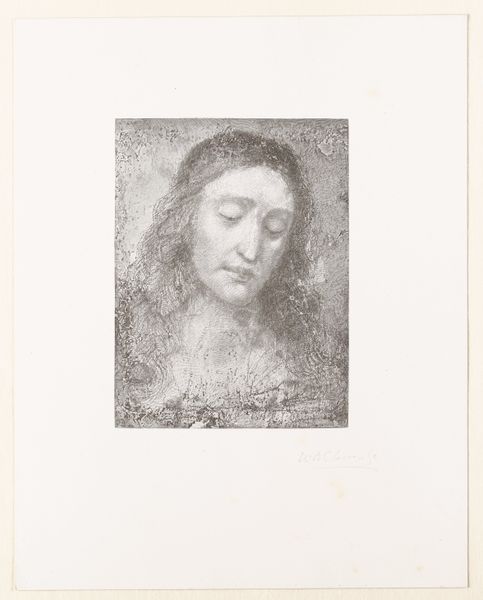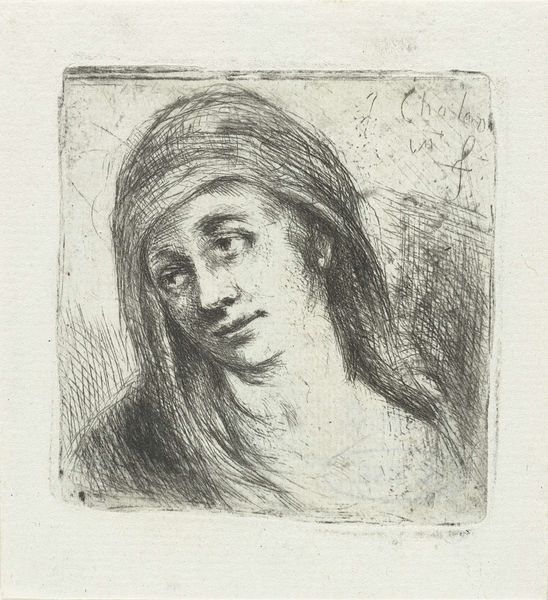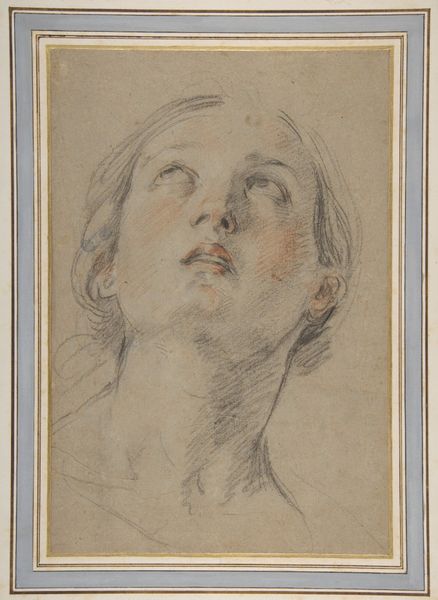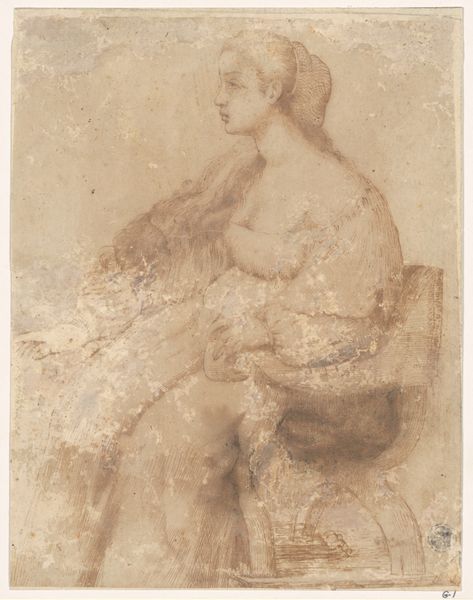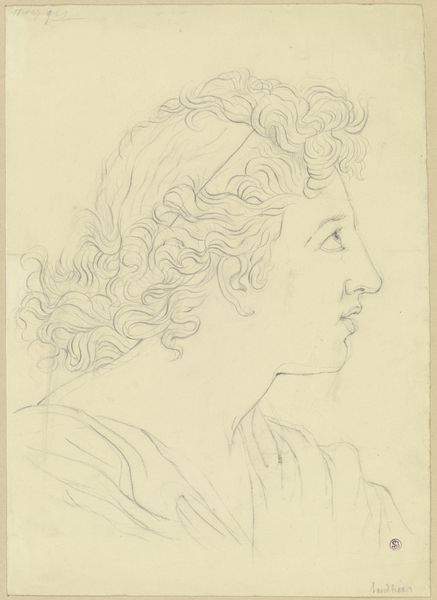
Head of a Young Woman 1479 - 1537
0:00
0:00
drawing, charcoal
#
portrait
#
drawing
#
self-portrait
#
charcoal drawing
#
11_renaissance
#
charcoal
#
italian-renaissance
Dimensions: Diameter 5 13/16 (14.8 cm.)
Copyright: Public Domain
Curator: Here we have Lorenzo di Credi's "Head of a Young Woman," likely created sometime between 1479 and 1537. It’s a charcoal drawing, a delicate rendering of a young woman in profile. Editor: Oh, she's so serene. It feels incredibly intimate, doesn't it? Like a private moment captured. The circular format almost makes her seem like she is framed by the artist's eye and mind, like a meditation object, her delicate charcoal contours and soft blush are creating some otherworldly creature of almost ethereal grace. Curator: That's insightful. The round shape, or tondo, was a popular format during the Renaissance, often associated with marriage portraits or devotional images. But the subtle gaze, it adds to that sense of contemplation you noted. The pose invites speculation and intimacy. Editor: Exactly. The downward tilt of her head...it makes you wonder what she is thinking or what feelings, maybe even struggles, reside just behind her perfectly sculpted nose and barely there lashes! Also, she might represent a new, emerging societal archetype in terms of aesthetics. I also feel a slight hint of vulnerability there, and yet, an inner strength, too. Curator: Precisely. The politics of imagery back then—it’s fascinating to consider how artists like di Credi navigated portraying women. This piece exists within that transition. It’s about more than physical likeness; it’s about projecting ideals and constructing a public persona. In fact, because there is evidence the artist’s work in these sketches shows him training and perhaps experimenting, it could even be an exercise to refine a new Renaissance form or ideal for beauty that transcends personal representation. Editor: Right? To our modern eye, this isn't simply representation but an intersection of societal expectation with personal experience. She feels familiar, I think because art echoes its contexts to those who perceive and interpret, just as light, like a river flows, and its essence never stops but is ever-changing and shifting into what once was no longer! So, to our young woman from long ago. Curator: I completely concur. Looking at how cultural forces shape a face so deliberately crafted and shaped, reminds us just how many versions can a face can suggest or propose. Thank you for sharing that poignant, almost meditative contemplation with us!
Comments
No comments
Be the first to comment and join the conversation on the ultimate creative platform.
